Contents
The membranous cobweb (Cortinarius paleaceus) is a small agaric fungus from the family Cortinariaceae and the genus Cortinaria. It was first described in 1801 and received the name sinuous champignon. Its other scientific names are tortuous cobweb given by Christian Persun in 1838 and Cortinarius paleiferus. Previously, all these mushrooms were considered different species, then they were combined into one common one.
Description of the cobweb membranous
The fungus does not reach large sizes. Depending on weather conditions, it is able to change its color and density of the pulp.
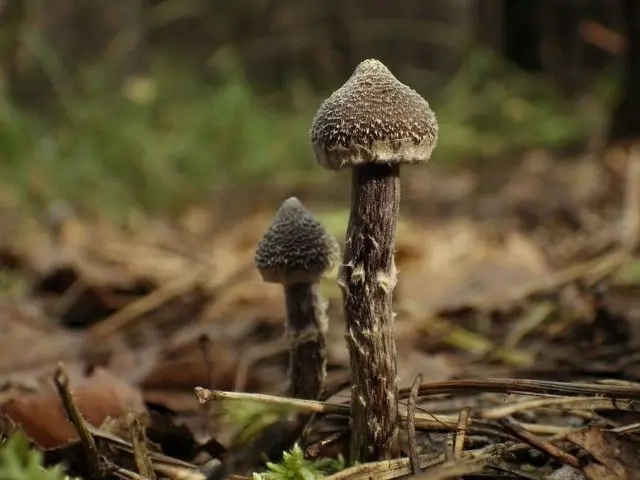
Only germinated fruiting bodies have an attractive appearance
Cap Description
The membranous cobweb at a young age has a cap in the form of a bell, with a noticeably elongated papillary tubercle at the top. As it develops, the cap straightens out, becoming umbrella-shaped, and then prostrate, with a cone-shaped tubercle in the center. The surface is uniformly colored, has lighter radial stripes. Covered with golden straw or white bristles, velvety, dry. Color chestnut, dark brown. When dry it becomes pale yellow. Hat diameter from 0,8 to 3,2 cm.
Hymenophore plates are frequent, irregular, free or serrated-increased. Beige-cream to chestnut and rusty-black-brown in color. The flesh is thin, brittle, buffy, black-violet, light chocolate or rusty-brown in hues, has a light aroma of geranium.
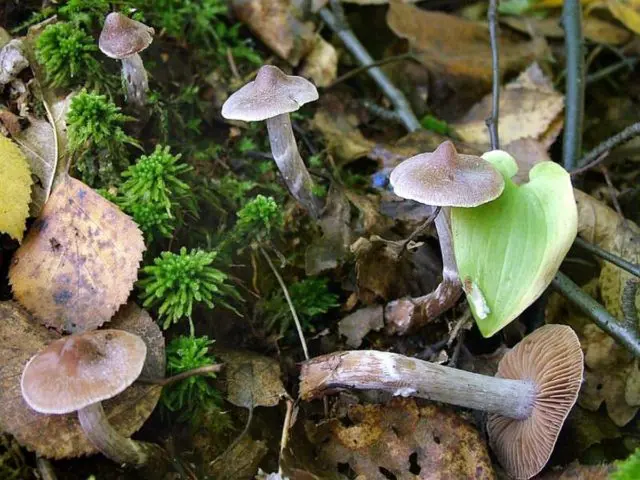
In wet weather, the caps become slimy shiny.
Description of the leg
The leg is dense, firm, longitudinally fibrous. It can be curved, hollow inside, the pulp is rubbery, elastic, rusty-brown. The surface is dry, covered with a white-grayish fluff. Dimensions reach 6-15 cm in length and 0,3-0,9 cm in diameter. Color beige, purple-brown, black-brown.
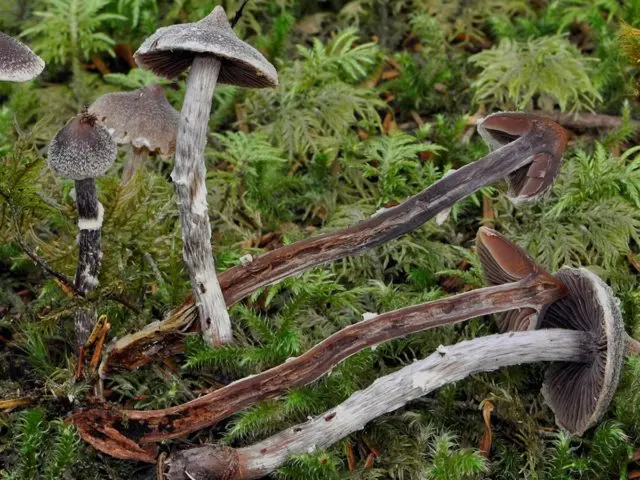
Relative to the cap, the legs of the fruiting bodies can reach considerable sizes.
Where and how to grow
The membranous cobweb lives in Europe and North America. In Our Country, its colonies are seen in the Kedrovaya Pad Nature Reserve in the Far East. Its distribution area is wide, but it can be found infrequently.
Grows in mixed coniferous-deciduous forests from mid-summer to September. He especially likes birch groves. Prefers wet places, ravines, lowlands, drying up swamps. Often grows in moss. Settles in large groups of separately spaced fruiting bodies of different ages.
Is the mushroom edible or not?
The cobweb is classified as an inedible species due to its low nutritional value. There are no exact data on the substances contained in it in open sources.
Twins and their differences
The membranous cobweb has a resemblance to close relatives.
Gossamer gray-blue. Conditionally edible. Differs in larger, up to 10 cm, sizes and silver-bluish, beige-ocher color.
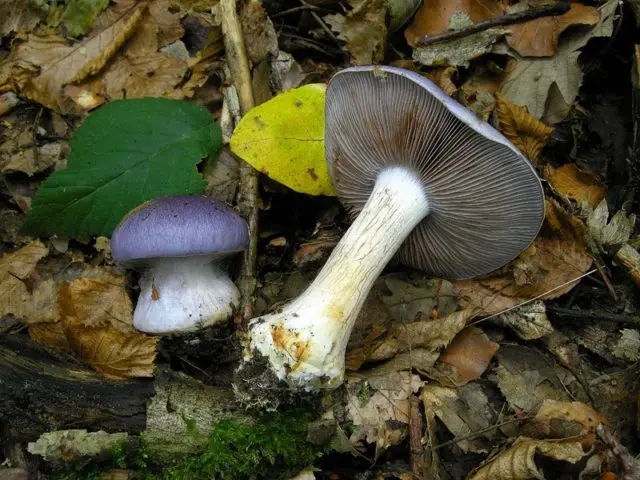
The leg has a light color: white, slightly blue with red-sun spots
Cobweb semi-hairy. Inedible. Differs in the big sizes and light coloring of a leg.
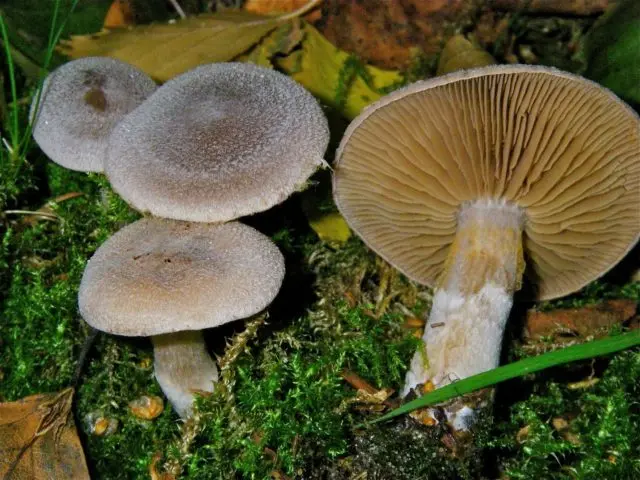
The legs of these mushrooms are medium in size and quite fleshy.
Conclusion
The cobweb is a small rare mushroom from the genus Cobweb. Found throughout the Northern Hemisphere, but not very abundant. In Our Country, it grows in the Far East. Prefers neighborhood with birches, outskirts of marshes, feels great in mosses. Inedible, has twins.









